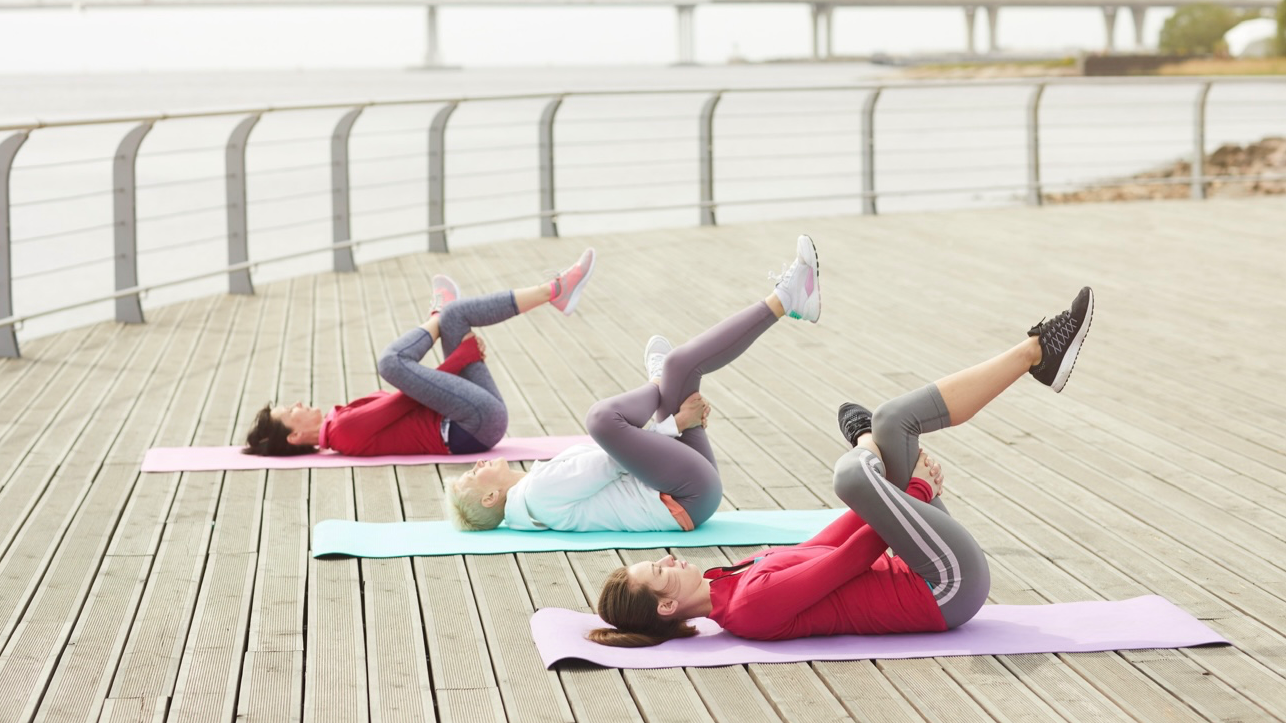Relieve SPD Pain: Top Exercises for Symphysis Pubis Dysfunction Relief
If you’re dealing with Symphysis Pubis Dysfunction (SPD), you know how challenging it can be to navigate everyday life. Whether it’s standing, walking, or even just rolling over in bed, the discomfort and pain can really get in the way. But don’t worry—you’re not alone, and there are exercises specifically designed to help relieve that pesky SPD pain and improve your overall pelvic stability.
In this article, we’ll dive into what SPD is, why it happens (especially during pregnancy), and the best exercises to help manage and reduce your symptoms. With a little movement and the right techniques, you’ll be on your way to feeling more comfortable and confident in no time.
What is Symphysis Pubis Dysfunction (SPD)?
Symphysis Pubis Dysfunction, also known as Pelvic Girdle Pain (PGP), occurs when the ligaments that normally keep your pelvic bones aligned become too relaxed and stretchy, causing pain in the pelvic region. This is particularly common during pregnancy due to the hormone relaxin, which helps the body prepare for childbirth by loosening the joints and ligaments in the pelvis.
The symphysis pubis is the joint located at the front of your pelvis where the two pubic bones meet. When this joint becomes too relaxed, it can lead to misalignment and pain in the lower pelvis, hips, lower back, and even down the legs.
Common Symptoms of SPD
– Pain in the pubic area: A sharp or stabbing sensation that worsens with movement.
– Lower back pain: Especially around the sacroiliac joints.
– Difficulty walking: You may notice a waddling gait or pain when lifting one leg.
– Hip discomfort: SPD can make it painful to perform actions like getting out of bed, climbing stairs, or even standing on one leg.
– Clicking or grinding sensation: You might feel or hear a clicking sound in your pelvic area when moving.
Why Does SPD Happen, and Who’s at Risk?
SPD most commonly occurs during pregnancy due to the body’s preparation for childbirth, but it can also affect non-pregnant individuals, particularly athletes or those with hypermobility.
Pregnancy-related SPD is often triggered by:
– Hormonal changes: The hormone relaxin softens the ligaments and joints in the pelvic region, causing instability.
– Previous pelvic injury: Women who have had pelvic trauma or injury before pregnancy are more prone to developing SPD.
– Multiple pregnancies: Each subsequent pregnancy increases the likelihood of SPD.
Now that we understand what SPD is and why it happens, let’s get into the good stuff— exercises that can help relieve your pain and discomfort.
Top Exercises to Relieve SPD Pain
These exercises focus on strengthening the muscles around your pelvis, hips, and lower back, providing greater stability to the area and helping to ease the pain caused by SPD. Remember, it’s important to start slow and listen to your body. If any exercise increases your pain, stop immediately and consult your healthcare provider.
1. Pelvic Tilts
Pelvic tilts are a gentle exercise that strengthens your abdominal muscles and supports your pelvis.
How to do it:
– Start by lying on your back with your knees bent and feet flat on the floor. Place your hands on your hips.
– Gently flatten your back against the floor by tilting your pelvis upwards, engaging your abdominal muscles.
– Hold this position for a few seconds, then slowly release back to neutral.
– Repeat 10-12 times.
Tip: If lying on your back is uncomfortable during pregnancy, you can perform pelvic tilts while standing against a wall or on all fours.
2. Kegels
Kegels strengthen your pelvic floor muscles, which can help stabilize your pelvis and reduce the pain associated with SPD.
How to do it:
– Sit, stand, or lie down in a comfortable position.
– Squeeze your pelvic floor muscles as if you’re trying to stop the flow of urine.
– Hold the squeeze for 5 seconds, then relax.
– Repeat 10-15 times, gradually increasing the hold time as your strength improves.
Tip: If you’re not sure how to engage your pelvic floor, try practicing Kegels while using the restroom by stopping your flow of urine mid-stream. (But don’t do this regularly as it can weaken your muscles over time.)
3. Hip Squeeze (With a Ball or Pillow)
This exercise strengthens the inner thighs and pelvic muscles, which can help stabilize your pubic symphysis.
How to do it:
– Sit or lie down on your back with your knees bent and feet flat on the floor.
– Place a small ball or pillow between your knees.
– Squeeze the ball or pillow by bringing your knees together, holding the tension for 5-10 seconds.
– Release and repeat 10-12 times.
Tip:You can also do this exercise in a seated position if lying down is uncomfortable.
4. Cat-Cow Stretch
The Cat-Cow stretch is a gentle way to mobilize the spine and pelvis, helping to relieve tension in your lower back and pelvic area.
How to do it:
– Get on your hands and knees in a tabletop position.
– As you inhale, arch your back, allowing your belly to drop towards the floor (Cow pose).
– As you exhale, round your back, tucking your chin towards your chest and pulling your belly button towards your spine (Cat pose).
– Repeat this movement slowly 8-10 times, focusing on smooth transitions between the two poses.
Tip: This is a great stretch to do during pregnancy, as it helps alleviate lower back pain and keeps the spine flexible.
5. Bridge Pose
The bridge pose helps strengthen the glutes, lower back, and core, which are all essential for pelvic stability.
How to do it:
– Lie on your back with your knees bent and feet hip-width apart.
– Slowly lift your hips off the ground, pressing through your feet and squeezing your glutes.
– Hold the bridge position for 5-10 seconds, then lower your hips back down.
– Repeat 10-12 times.
Tip:Keep your core engaged to avoid straining your lower back. You can also place a pillow or yoga block under your hips for added support if needed.
6. Modified Side Plank
Side planks strengthen your obliques and the muscles around your hips and pelvis, which can help with SPD pain.
How to do it:
– Lie on your side with your knees bent, and prop yourself up on your forearm.
– Lift your hips off the ground, creating a straight line from your shoulders to your knees.
– Hold for 10-20 seconds, then lower back down.
– Repeat on the other side.
Tip:If you feel unstable, keep your bottom leg bent for extra support. As your strength improves, you can straighten both legs for a more challenging variation.
7.Swimming
Swimming is one of the best exercises for SPD because it’s low-impact and helps reduce pressure on your pelvis. The water supports your body weight, allowing you to move more freely without aggravating your symptoms.
How to do it:
– Try swimming gentle laps, focusing on smooth, controlled movements.
– Avoid breaststroke, as the leg movements can exacerbate pelvic pain.
– Water aerobics can also be a great option for maintaining fitness without putting strain on your pelvis.
Tip: If you’re new to swimming or don’t feel confident, consider using a kickboard or pool noodle for support.
Additional Tips for Managing SPD
In addition to regular exercise, here are a few extra tips to help you manage SPD:
1. Wear a pelvic support belt: A maternity or pelvic support belt can help stabilize your pelvis and reduce pain during daily activities.
2. Modify your movements: When standing, keep your weight evenly distributed on both feet. Avoid putting all your weight on one leg or twisting your body too much.
3. Take breaks: If you have to stand or walk for long periods, make sure to rest frequently and avoid over-exerting yourself.
4. Sleep with a pillow between your knees: Keeping your legs aligned while sleeping on your side can reduce strain on your pelvis.
5. Talk to a physical therapist: If your SPD pain is severe, consider seeing a physical therapist who specializes in pelvic health. They can create a tailored exercise plan and offer hands-on treatments to relieve your discomfort.
The Bottom Line
Dealing with Symphysis Pubis Dysfunction can be tough, but incorporating gentle exercises into your daily routine can make a big difference in managing pain and improving your mobility. Focus on strengthening the muscles around your pelvis, practicing good posture, and making small adjustments to your movements to protect your pelvic area.
If you’re ever unsure whether an exercise is right for you or if your pain worsens, always consult your healthcare provider for personalized advice. With the right exercises and support, you can find relief and get back to feeling more comfortable in your body.
Give these exercises a try, stay consistent, and soon you’ll be well on your way to relieving SPD pain and improving your overall pelvic health!











